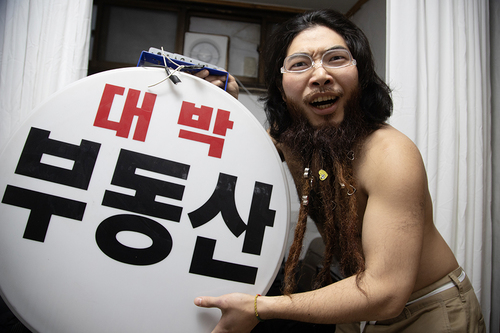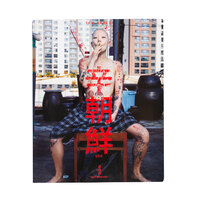Yang Seung-Woo "TFW KOREA"
Pre-registration required. Young people [as long as you consider yourself young], regardless of gender or nationality are welcome. If you need an interpreter, English, Korean, and Chinese will be available. Body language is also acceptable. Registration is not required for those who just want to listen to the talk. All participation is free of charge.
—
Zen Foto Gallery is pleased to present Yang Seung-Woo’s exhibition “TFW Korea” from Friday, January 10 to Saturday, February 22, 2025, to celebrate the release of his new photo book under the same title. Having been touched by the sense of stagnation and difficulty in life faced by the young people of Korea who visit his exhibitions in Korea, Yang decided to photograph them. Until then, Yang had not been able to photograph his homeland since his early seminal work “The Best Days”. He recruited young people living in Korea who wanted to have their portraits taken and asked them to choose their own locations for the photographs. Yang photographed more than 50 people, and this exhibition will feature approximately 20 colour prints selected from these portraits.
In addition to the portraits of the Korean young people, the photo book, which was published in September 2024, also includes their personal thoughts written by each of the subjects and an afterword by Yang Seung-Woo in both English and Korean.
On Saturday, February 22, the last day of the exhibition, a talk session will be held for young people who would like to talk to Yang. Although the project was originally intended for young people in Korea, the artist would like to interact with young people regardless of nationality and listen to their current thoughts and feelings.
‘It’s been a while since I last visited my hometown in South Korea when I heard about the shocking accident in 2023. On a weekend close to Halloween, a crowd crush occurred in the Itaewon, a neighbourhood in Seoul full of young people. I couldn’t believe that so many people could die in the accident. This is the second time in a row that a major accident has killed a lot of young people while I was in South Korea. I was in the country too when the MV Sewol Ferry sank.
Over the past few decades, South Korea has become a more competitive society, with the current times overlapping against its cultural and ethnic background. As a result, South Korea has the highest youth suicide rate among developed countries and the lowest birth rate in the world. Some young people jokingly refer to their country as “Hell Joseon” [Hell Korea].
I suddenly felt the urge to meet and chat with these young people.
The majority of people who like what I do and come to my exhibitions in South Korea are young people. In Korea, where reputation, capabilities and appearance often determine one’s value, a bearded, shaven-headed man who is not handsome, only wears a T-shirt and does not dress according to his age is not embarrassed of who he is.
I’ve lived an unremarkable life with few achievements, yet I have somehow become someone noteworthy.
It’s a bit ironic that my work gives young people courage. Some of them cry when they see my work.
I wanted to take pictures of these kids.
I met with a lot of young people. They were all living their lives to the fullest.
When I told them I’d meet them again in 10 years, one of them said, “If you can take photos for me again, I’ll try my best to live the next 10 years.” I was surprised to hear that, so I decided to take photos of them again in 5 years.
The kids in these pictures and I promised to meet up again in five years, so I’m sure they’ll be just fine. But to the young people not in these pictures who are feeling lost or frustrated right now — I’d like you to learn to believe in things you can’t see. If you don’t do that, it’s impossible to keep going. And if you don’t give up on life, someone might come along and support you, and they might tell you that you’re exactly what they need. If you think it wouldn’t be that easy, just tell yourself what you want to hear, and back yourself up with some unfounded confidence. I recommend this approach because it has always served me well (hahah). I know I’m getting a bit preachy, but I’d be really happy if you got my message.
Regarding the title, I tried to think about what Korea is known for and came up with idols, cosmetic surgery, cosmetics and spicy food. The only thing that made me feel at home was spicy food. The Chinese character [Kanji in Japanese/Hanja in Korean], “辛” [which reads as shin/karai/tsurai in Japanese] means spicy, painful or difficult. It’s often said that if you add a stroke to the character, you get happiness “幸” [shiawase]. I hope that you will be able to find that stroke. That’s what I want to find in myself too. That’s why I chose the title “辛朝鮮” [Shin Joseon].
It doesn’t matter how you read “辛”, whether it’s karai (spicy) or tsurai (painful). You may also interpret the “shin” as “new” as they have the same pronunciation. I’m okay with that and I’ll let the readers decide.
There is a saying in Korea that “small chillies are spicy” and in Japan that “Japanese pepper is small-grained but has a tongue-numbing tingle”.
I am always encouraged by people, so I try to encourage others too.
Am I trying too hard to seem cool? (lol)’
Yang Seung-Woo
















